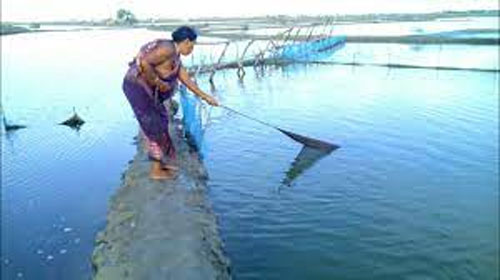By Nivedita Khandekar
New Delhi, Apr 27 (IANS): Adaptation plans in view of the changing climatic conditions across the globe for coastal areas have rendered the gender dimension invisible, which may mean that the experience of those who are traditionally sidelined in fisheries, the primary livelihood, continue to be invisible further compounding inequalities of various natures, a study has said.
Women in coastal communities play a central role in the entire fish value chain -- directly as fish farmers, traders and processors alongside playing supportive roles in the management of money, labour, and equipment for fishing enterprises.

And yet, despite their importance for fisheries and in particular for post-harvest processing and aquaculture, women are often assigned the most unstable and poorly paid positions leading to a lack of recognition and to fisheries being seen as a masculine sector.
Published on Monday in 'Frontiers in Climate', the multi-author study 'Climate Adaptation Interventions in Coastal Areas: A Rapid Review of Social and Gender Dimensions' has discussed the issue threadbare and found out gaps in gender equity in adaptation plans, including research on the subject not addressing the spatial variations in the communities vis-a-vis anglophile studies and regional/cultural studies.
Around the world, the number of people living within 10 km of the coastline amounts to around 600 million people -- about 10 per cent of the world's population while around 40 per cent of the world population, i.e., over 2.4 billion people, live within 100 km from the coast. Now, imagine the proportion of women among this population and how the lack of data renders women practically invisible and reinforces gender inequalities.
As per the Inter-governmental Panel on Climate Change (IPCC's) Special Report on Oceans and Cryosphere (SROCC), shows sea levels are rising at 3.7 mm per year, about three times faster than the long-term average during 1901-1971 (1.3 mm per year) due to retreating glaciers and ice sheets and thermal expansion of seawater and the climate models further project that under low-to-high greenhouse gas (GHG) emission scenarios sea level rise (SLR) will continue at a rate of 4.4-9 mm per year from 2015-2100, leading to increased numbers of coastal extreme events.
It is here that the adaptation would play a major role for the coastal communities. The study authors looked at research papers on gender concerning five climate adaptation strategies: coral and mangrove restoration; aquaculture; wetlands; bio-diversity, and coastal protection.
"While there is a need to act rapidly to support coastal communities to undertake these adaptations, this should not be at the expense of achieving gender equality, or worse still lead to an exacerbation of inequalities," the study said.
"Ignoring the gender dimensions of climate adaptation interventions may mean that the experiences of those who are already sidelined in the context of fisheries and coastal livelihoods continue to be rendered invisible, further compounding inequalities of various natures," it pointed out and suggests, for this reason, it is essential that those designing and monitoring adaptation action take explicit notice of gender dynamics.
The SROCC broadly highlights some of the major ways in which gender inequality interacts with coastal climate change and risk, however, it does not consider how gender interacts with adaptation interventions, the authors pointed out.
An interesting observation was that most of the studies that consider gender in the context of coastal hazards and sea-level rise are focused on the global South with much less known about these hazards in the global North.
"The overall score of the relationship between climate adaptation in coastal eco-systems concerning gender is principally negative," the study assessment said, adding: "These negative outcomes can be interpreted in two main ways; either coastal and marine adaptation options are gender blind or else they are ignoring the opportunity to enhance gender equity in the implementation of new adaptation-related investments and projects."
This may be due to a lack of information on the additional steps needed to consider gender or due to imbalanced and discriminatory approaches to measures, they said.
Pointing out that there is a substantial research gap in relation to understanding the gender dimensions of coastal climate change as well as an unequal concentration of research geographically, the study said, it is, of course, with the caveat that outside anglophone mainstream academia, the evidence base may look more promising.
It also flagged how technology and credit are often geared towards the actual tasks of "fishing", ignoring the multiple pre- and post-harvest tasks that are also essential and property ownership.
"So, while SDG5 - gender equality and women's empowerment - does provide a useful analytical framework, our review demonstrates that issues of gender equality within coastal communities may not neatly fit into the identified indicators, making assessment difficult," the authors said.